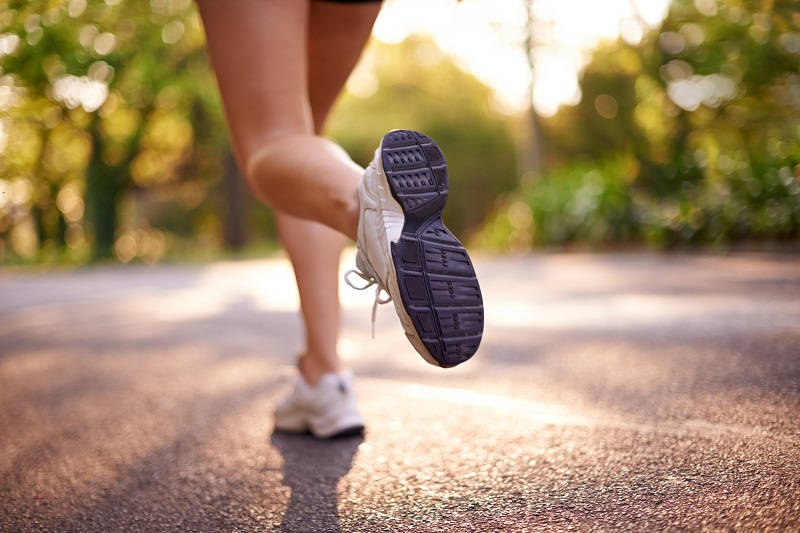7 Running Tips for Beginners
[ad_1]
Even a little bit of running can make a big difference to your health: Studies have shown that as little as five to 10 minutes of running per day can increase blood flow to the parts of our brains that control our moods, improve bone health, and even extend your life expectancy by a few years.
But running is also risky: More than half of recreational runners sustain a running-related injury each year. And for people training for marathons, that number is almost 90 percent.
Follow these seven tips so you can start your new running regimen strong and stay safe, protected from injury for mile after mile.
1. Talk to a doctor before you start.


Before starting any exercise program, talk to a doctor. This can be your primary care physician, if you have one, or a doctor you meet with through a telehealth app. A medical professional can advise you on what’s safe for you to do, fitness-wise, and may also have specific recommendations based on your medical history and current conditions. If you’re diabetic, for instance, they might recommend that you carry certain types of foods with you when you run, or have other preparations ready in case of an emergency.
2. Go slower than you think you should.


Lots of people who “hate running” have the same problem—they’re trying to go too fast! If you go out and try to run at a difficult intensity for a long distance, you’ll pass what’s called your first ventilatory threshold, or VT1.
At this level, your body is in overdrive, rapidly using up carbohydrates that are stored in your muscles as fuel … and burning you out quickly. Instead, the bulk of your running—about 80 percent of it—should be at a pace where you can carry on a comfortable conversation, or at least speak in full sentences.
Even elite marathoners train this way—most of their training is “easy days,” where they’re running a slower pace than their race pace. This pace just seems really fast because their top speed is so much faster. But they’re also keeping a pace where they can speak in full sentences.
For some, a “talkable pace” may mean not running at all when you’re starting out—you may not be able to hold a conversation while running. Instead, start with very brisk walking, with some jogging interspersed in between. Within a few weeks, you’ll be able to talk while jogging.
3. Don’t start running every day right away.


You might be inspired to hit the pavement by a January “Run Every Day” challenge. These challenges are great motivation, but they’re not for beginners. Your body and joints need time to recover between runs. Going from the couch to running every day without a break can result in injury.
If one of these challenges is spurring you on, make it your own: Commit to running or walking every day. Give yourself one to two days between running sessions, and go for a walk on the days in between.
4. Warm up!


Another thing that marathon pros do: They warm up. But many recreational runners just lace up their shoes and start jogging.
Studies have shown that skipping a warmup can increase your injury risk, reduce your running performance, and make you feel more sore after a workout. So commit to warming up—not stretching, but some movement that will get blood flowing to your joints and increase your heart rate slightly.
Set a timer for three or four minutes and perform some squats, leg swings, arm swings, ankle circles and high-knee marching. Then start your run with a few minutes of intentionally slow running or walking, building up to your training speed.
5. Include some bursts of (a little extra) speed.


Whether you’re starting out walking hard or jogging, adding in short bursts of additional speed can improve your fitness and significantly increase the number of calories you burn during your session. In one study, scientists found that by increasing their pace by just five inches per second for one minute at a time during their workout, study participants burned 20 percent more calories than when they kept the same pace throughout a session.
If you’re walking, try adding in short bursts of faster walking—or even slow jogging—every three, four or five minutes. If you’re running, try the same—do a burst of 30 seconds or a minute every few minutes.
You can even make it a little more unstructured: When you’re jogging, try running a little faster to the next stop sign once in a while. Do a few “run to that pole” bursts throughout your session.
6. Take shorter strides, and more of them.


There are really only two ways to run faster: Take longer strides, so each stride eats up more distance, or increase the number of strides you take per minute.
Novice runners often reach for more length with each stride. But as they become better and faster, their strides become shorter, and the pace of their strides increases.
This isn’t just about getting faster, though: More, shorter strides are associated with fewer running injuries. That’s because each stride provides less shock to the ankles, knees, hips and low back. Studies show that these joints have to absorb less energy with each shorter stride, so they’re less likely to get injured from the bigger shocks of longer strides.
Count your normal stride frequency for a minute or two. Then decrease your injury risk by increasing your step frequency by five to 10 percent, reducing the length of your strides to let you do these extra steps.
7. Be patient.


If you’ve been inspired by seeing friends run a half-marathon, or know someone who can just pop out the door and knock out a 10-K, the pace of your progress might feel frustrating at first. It takes a long time to build up the fitness and muscular endurance required to easily run far—and that’s OK!
Like eating healthy, finding a form of exercise that you enjoy—and sticking to it—is about creating a lifestyle change, not a single, sweeping shift.
To help yourself stay motivated as you progress, consider keeping a diary or journal of your runs. You can use an app like NuMi to track your workouts, write it in a notebook, or even use your phone’s camera to keep track.
Don’t just keep track of your mileage and times: Make a note of how you feel after each run—how strong you felt, parts that were struggles, and other feelings that might have arisen. Then you can go back into your app, notebook, photo/video gallery, or social media feed and see how you’ve progressed. You might not feel much faster, but you’ll see that distances and times that used to make you struggle are now breezy—and you’ll be motivated to keep going.
Always speak to your healthcare provider before starting a new exercise routine.
[ad_2]

















